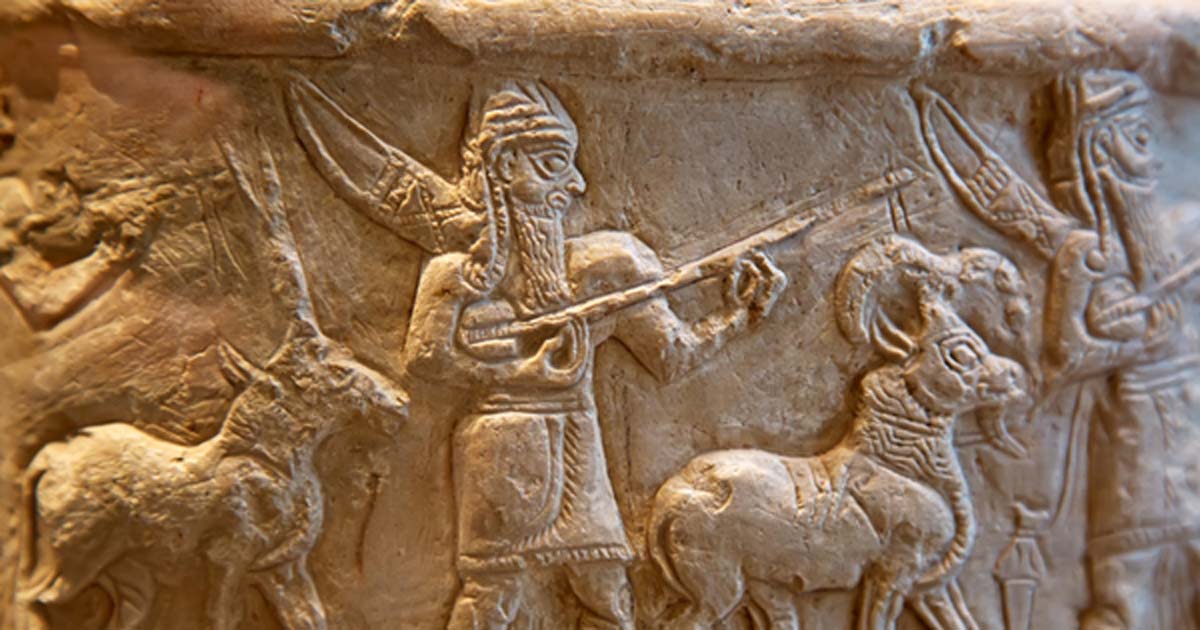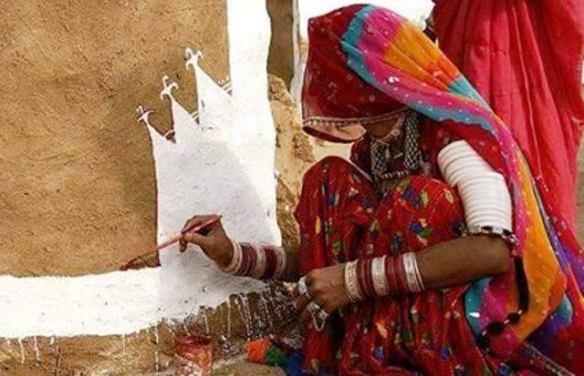
- Indus civilization was discovered by Rai Bahadur Dayaram Sahni in 1921. The Indus civilization can be placed in the Proto-historic or Bronze Age. The main inhabitants of this civilization were Dravidian and Mediterranean.
- सिंधु सभ्यता की खोज 1921 में रायबहादुर दयाराम साहनी ने की सिंधु सभ्यता को आद्य-ऐतिहासिक अथवा कांस्य युग में रखा जा सकता है इस सभ्यता के मुख्य निवासी द्रविड़ एवं भूमध्य सागरीय थे

Contents
Discovery of Indus Valley Civilization
- Sir John Marshall duly announced the founding of an advanced urban civilization called the Indus Valley Civilization in 1924.
- सर जॉन मार्शल ने 1924 ई. में सिंधु घाटी सभ्यता नामक एक उन्नत नगरीय सभ्यता पाए जाने की विधिवत घोषणा की

Site of the Indus civilization
- The westernmost site of the Indus civilization is Sutkagindor situated on the banks of the river Daska, the eastern site Alamgirpur on the banks of the river Hindon, the northern site of the Chenab river near Akhnoor, the southernmost site, Daimabad on the banks of the river Godavari.
- सिंधु सभ्यता के सर्वाधिक पश्चिमी पुरास्थल दशक नदी के किनारे स्थित सुतकागिंडोर , पूर्वी पुरास्थल हिंडन नदी के किनारे आलमगीरपुर , उत्तरी पुरास्थल चिनाव नदी के तट पर अखनूर के निकट माँदा वह दक्षिणी पुरास्थल गोदावरी नदी के तट पर दाइमाबाद

- The Indus Civilization or Sendhav Civilization was an urban civilization. Only 6 have been given the number of cities in the mature stage obtained from the Indus Civilization. These are Mohenjodaro, Harappa, Ganwariwala, Dholavira, Rakhigarhi and Kalibagan.
- सिंधु सभ्यता या सेंधव सभ्यता नगरीय सभ्यता थी सैंधव सभ्यता से प्राप्त परिपक्व अवस्था वाले स्थलों में केवल 6 को ही बरे नगर की संख्या दी गई है ये है -मोहनजोदड़ो, हड़प्पा ,गनवारीवाला , धोलावीरा , राखीगढ़ी एवं कलीबगन

Harappan culture
- Most sites of Harappan culture have been discovered in Gujarat after independence.
- स्वतंत्रता प्राप्ति पश्चात हड़प्पा संस्कृति के सर्वाधिक स्थल गुजरात में खोजे गए हैं

Mohenjodaro
- The largest site of Indus Valley Civilization is Mohenjodaro while its largest site in India is Rakhigarhi which is located in Hisar district of Haryana, it was discovered by Suraj Bhan in 1963 AD.
- सिंधु घाटी सभ्यता का सबसे बड़ा स्थल मोहनजोदड़ो है जबकि भारत में इसका सबसे बड़ा स्थल राखीगढ़ी है जो हरियाणा के हिसार जिले में स्थित है इसकी खोज 1963 ई. में सूरजभान ने की थी

- Evidence of the use of shoe fields and carved bricks has been received from Kalibanga.
- जूते हुए खेत और नक्काशीदार ईंटो के प्रयोग का साक्ष्य कालीबंगा से प्राप्त हुआ है

- The bathhouse obtained from Mohenjodaro is probably the largest building of the Indus civilization, in the center of which is the bathing pool 11.88 meters long, 7.01 meters wide and 2.4 3 meters deep.
- मोहनजोदड़ो से प्राप्त स्नानागार संभवत : सैंधव सभ्यता की सबसे बड़ी इमारत है जिसके मध्य स्थित है स्नान कुंड 11.88 मीटर लंबा 7.01 मीटर चौड़ा एवं 2.4 3 मीटर गहरा है

- Agnikunds received from Lothal and Kalibangan.
- अग्निकुंड लोथल एवं कालीबंगन से प्राप्त हुए

- The idol of the three main deity has been found on a sila found from Mohenjodaro. Elephant, rhinoceros, cheetah and buffalo are seated around them.
- मोहनजोदड़ो से प्राप्त एक शील पर तीन मुख्य वाले देवता की मूर्ति मिली है उनके चारों और हाथी, गैंडा ,चीता एवं भैंसा विराजमान है

- A bronze statue of a dancer has been found from Mohenjodaro.
- मोहनजोदड़ो से नर्तकी की एक कांस्य मूर्ति मिली है

- Most of the Harappan seals are marked with a horned animal. A rectangular seal obtained from here shows a plant emerging from a woman’s womb.
- हड़प्पा की मोहरों पर सबसे अधिक एक श्रृंगी पशु का अंकन मिलता है यहां से प्राप्त एक आयतकार मुहर में स्त्री के गर्भ से निकलता पौधा दिखाया गया है

Script of Indus civilization
- Bead-making factories have been found in Lothal and Chanhudaro. The script of Indus civilization is pictorial.
- मनके बनाने के कारखाने लोथल एवं चन्हूदड़ो में मिले हैं सिंधु सभ्यता की लिपि भाव चित्रात्मक है यह लिपि दाई से बाई ओर लिखी जाती थी जब अभिलेख एक से अधिक पंक्तियों का होता था तो पहली पंक्ति दाएं से बाएं और दूसरी बाएं से दाएं और लिखी जाती थी

- The Sumerian civilization was the first civilization to develop a proper system of writing.
- लेखन कला की उचित प्रणाली विकसित करने वाली पहली सभ्यता सुमेरिया की सभ्यता थी

- The people of the Indus civilization adopted the grid system for the arrangement of cities and houses.
- सिंधु सभ्यता के लोगों ने नगरों तथा घरों के विन्यास के लिए ग्रीड पद्धति अपनाई

- The doors and windows of the houses opened openly towards the road and not towards the backyard, only the doors of the houses of Lothal Nagar opened towards the main road.
- घरों के दरवाजे और खिड़कियां सड़क की और ना खुलकर पिछवारे कि और खुलते थे केवल लोथल नगर के घरों के दरवाजे मुख्य सड़क की और खुले खुलते थे

Main crops of the Indus civilization
- The main crops of the Indus civilization are wheat and barley.
- सिंधु सभ्यता के मुख्य फसल गेहूं और जौ

- Inhabitants used honey for sweetness
- सैंधव वासी मिठास के लिए शहद का प्रयोग करते थे

- The people of Sendhav civilization used two wheeled and four wheeled Belgai or Buffalo cart for transportation.
- सेंधव सभ्यता के लोग यातायात के लिए दो पहियों एवं चार पहिया वाली बेलगाड़ी या भैंसा गाड़ी का उपयोग करते थे

- The word Meluha mentioned in the inscriptions of Mesopotamia refers to the Indus civilization itself.
- मेसोपोटामिया के अभिलेखों में वर्णित मेलूहा शब्द का अभिप्राय सिंधु सभ्यता से ही है

- Perhaps the rule of the Harappan culture was in the hands of the Varna class.
- संभवत: हड़प्पा संस्कृति का शासन वर्णिक वर्ग के हाथों में था

- The people of Indus civilization worshiped the earth as a goddess of fertility.
- सिंधु सभ्यता के लोग धरती को उर्वरता की देवी मानकर उसकी पूजा करते थे

- Evidence of the practice of tree worship and Shiva worship comes from the Indus civilization.
- वृक्ष- पूजा एवं शिव पूजा के प्रचलन के साक्ष्य सिंधु सभ्यता से मिलते हैं

- The swastika symbol is probably a contribution of the Harappan civilization, from this sign it is estimated that the sun worship is not found in the cities of the Indus Valley, the remains of any temple have been found.
- स्वास्तिक चिन्ह संभवत हड़प्पा सभ्यता की देन है इस चिन्ह से सूर्योपासना का अनुमान लगाया जाता है सिंधु घाटी के नगरों में किसी भी मंदिर के अवशेष नहीं मिले हैं

- Indus civilization worship of mother goddess was most prevalent
- सिंधु सभ्यता मातृ देवी की उपासना सर्वाधिक प्रचलित थी

- The humpbacked bull was especially revered for the people of this civilization.
- पशुओं में कुबड़ वाला साँड़ इस सभ्यता के लोगों के लिए विशेष पूजनीय था

- The Sendhav people used cotton and woolen items
- सेंधववासी सुती एवं ऊनी वस्तुओं का प्रयोग करते थे

- For entertainment, the Sandhav people used means like fishing, hunting, fighting among animals, playing dice, etc.
- मनोरंजन के लिए सेंधववासी मछली पकड़ना , शिकार करना , पशु पक्षियों को आपस में लड़ाना , चौपड़ और पासा खेलना आदि साधनों का प्रयोग करते थे

- The people of Indus Civilization used to make red pottery designed in black color.
- सिंधु सभ्यता के लोग काले रंग से डिजाइन किए हुए लाल मिट्टी के बर्तन बनाते थे

Kalibangan
- The people of the Indus civilization were not familiar with the sword. Kalibangan was the only Harappan site whose lower town was also surrounded by forts. Kalibangan means black bangles. Evidence has been found from here for plowing the fields of pre-Harappan levels and the practice of fire worship.
- सिंधु सभ्यता के लोग तलवार से परिचित नहीं थे कालीबंगन एक मात्र हड़प्पाकालीन स्थल था जिसका निचला शहर भी किले से घिरा हुआ था कालीबंगन का अर्थ है काली चूड़ियां यहां से पूर्व हड़प्पा स्तरों के खेत जोते जाने के और अग्नि पूजा की प्रथा के प्रमाण मिले हैं

- Purdah system and prostitution were prevalent in the Sendhav civilization.
- पर्दा प्रथा एवं वेश्यावृत्ति सेंधव सभ्यता में प्रचलित थी

- Both the practice of burning dead bodies and singing were prevalent; burial of dead bodies was prevalent in Harappa, while the practice of burning was present in Mohenjodaro. Couple tombs have been found in Lothal and Kalibanga.
- शवों को जलाने एवं गारने यानी दोनों प्रथाएं प्रचलित थी हरप्पा में शवों को दफनाने जबकि मोहनजोदड़ो में जलाने की प्रथा विद्यमान थी लोथल एवं कालीबंगा में युग्म समाधिया मिली है

- The most effective cause of the destruction of the Sendhav civilization was probably the fence.
- सेंधव सभ्यता के विनाश का संभवत: सबसे प्रभावी कारण बाड़ था

- Clay baked in fire is called terracotta
- आग में पक्की हुई मिट्टी को टेराकोटा कहा जाता है


